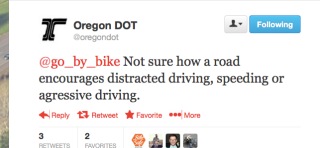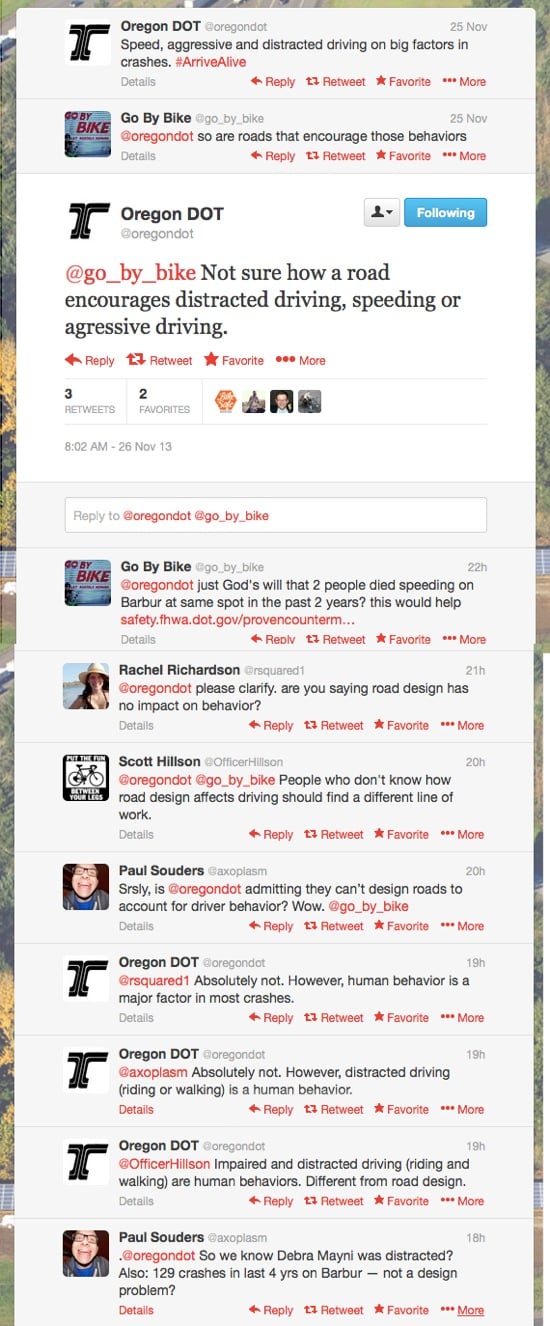
Another person died while traveling on SW Barbur Blvd this week. It’s the fourth fatality since 2010 on the notoriously dangerous 1.6 mile section of the road between Terwilliger and Hamilton.
With a record of so much carnage and rampant high speed and high risk driving, many Portlanders want to see the Oregon Department of Transportation (ODOT) take a more aggressive approach to changing the design of Barbur in a way that would slow people down and encourage safer behavior. However, as we shared back in August when a 27-year-old man died after traveling at a “very high rate of speed” and losing control of his Prius, ODOT has no plans to seriously consider a roadway reconfiguration (a.k.a. “road diet”) on Barbur.
Many people have urged ODOT to put Barbur on a “road diet” because such a design is considered a “proven safety countermeasure” by numerous studies and even by the Federal Highway Administration.
This tension between ODOT and the community around Barbur was evident after the agency tweeted on Monday — just two hours after the most recent fatality — that, “Speed, aggressive and distracted driving on [sic] big factors in crashes.” Later that night, Friends of Barbur volunteer Kiel Johnson replied by tweeting, “so are roads that encourage those behaviors.”
It was ODOT’s reply to Johnson’s tweet that really struck a nerve: “Not sure how a road encourages distracted driving, speeding or agressive [sic] driving.”
Here’s the thread so far (you can also see it online):

Reached on the phone this morning, ODOT spokesman Don Hamilton said he understands the public’s reaction to the tweet; but he also offered an explanation. “That tweet was intended to say that even the best designed road cannot prevent bad decisions by motorists — no design elements can remove bad judgment.”
Hamilton said ODOT does indeed feel that road design “very clearly” has an effect on user behaviors and that the work they’ve done on Barbur is a good example. He pointed to the improved crosswalks, rapid flash beacons, and other projects they’ve done on the street in recent years as proof.
According to Hamilton, ODOT feels the responsibility for safety on Barbur is ultimately up to the user. “You can make smart choices about driving on that road… We have signs that help advise you about what’s safe in an area.”
As for this most recent fatality, Hamilton said it’s too early to make any determinations about why it happened.

